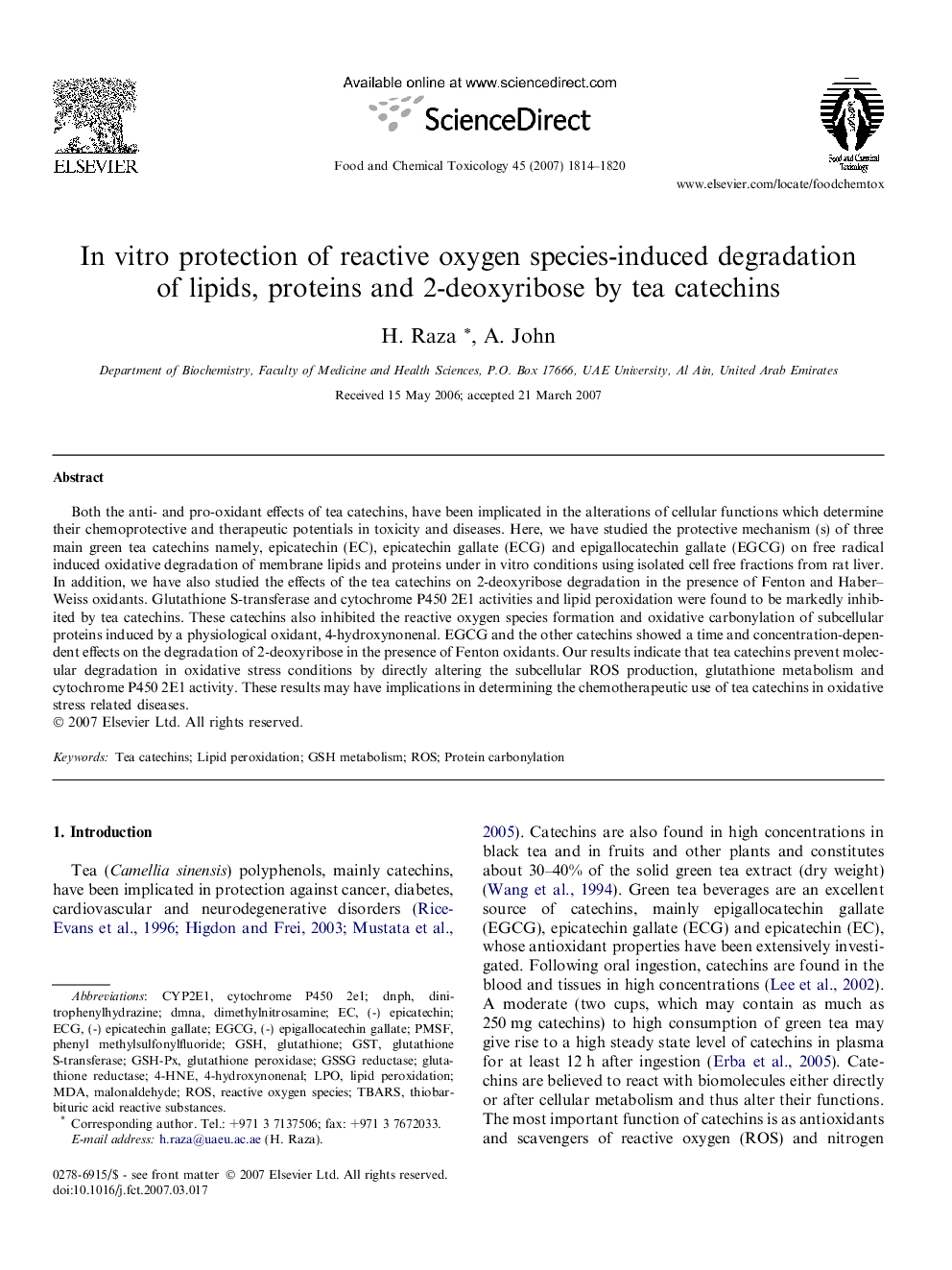| Article ID | Journal | Published Year | Pages | File Type |
|---|---|---|---|---|
| 2588068 | Food and Chemical Toxicology | 2007 | 7 Pages |
Both the anti- and pro-oxidant effects of tea catechins, have been implicated in the alterations of cellular functions which determine their chemoprotective and therapeutic potentials in toxicity and diseases. Here, we have studied the protective mechanism (s) of three main green tea catechins namely, epicatechin (EC), epicatechin gallate (ECG) and epigallocatechin gallate (EGCG) on free radical induced oxidative degradation of membrane lipids and proteins under in vitro conditions using isolated cell free fractions from rat liver. In addition, we have also studied the effects of the tea catechins on 2-deoxyribose degradation in the presence of Fenton and Haber–Weiss oxidants. Glutathione S-transferase and cytochrome P450 2E1 activities and lipid peroxidation were found to be markedly inhibited by tea catechins. These catechins also inhibited the reactive oxygen species formation and oxidative carbonylation of subcellular proteins induced by a physiological oxidant, 4-hydroxynonenal. EGCG and the other catechins showed a time and concentration-dependent effects on the degradation of 2-deoxyribose in the presence of Fenton oxidants. Our results indicate that tea catechins prevent molecular degradation in oxidative stress conditions by directly altering the subcellular ROS production, glutathione metabolism and cytochrome P450 2E1 activity. These results may have implications in determining the chemotherapeutic use of tea catechins in oxidative stress related diseases.
